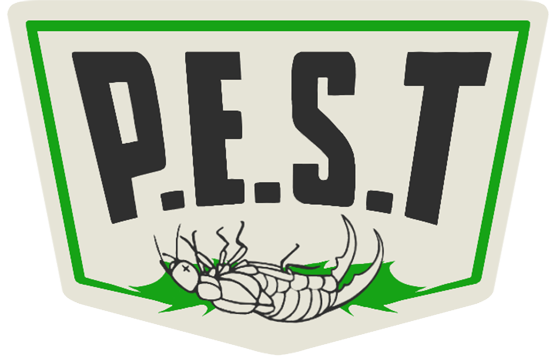Mosquitoes are one of the oldest species that have coexisted with dinosaurs, dating back over 200 million years. This longevity speaks to their incredible adaptability and evolutionary success. Through fossil records, particularly those preserved in amber, scientists have been able to trace the evolutionary path of mosquitoes. These insects belong to the family Culicidae and have evolved through numerous ecological changes, adapting their breeding and feeding habits to survive through the ages.
Role In Human History
Mosquitoes have played a critical and often deadly role in human history, affecting the fates of empires and the outcomes of pivotal wars. One of the most significant impacts has been the spread of malaria, a disease transmitted through the bite of the female Anopheles mosquito. Historically, malaria outbreaks have devastated populations, particularly in Rome, where some historians believe that mosquito-borne diseases contributed to the decline of the Roman Empire.
In the modern era, mosquitoes continued to shape history during the construction of the Panama Canal, where thousands of workers succumbed to yellow fever and malaria before the successful implementation of mosquito control measures by Dr. William Gorgas. This effort not only saved countless lives but also facilitated the completion of one of the most significant engineering feats of the time.
Overview Of Common Species
Indiana hosts a variety of mosquito species, each adapted to the state's diverse environmental conditions. These species differ significantly in their habitats, behaviors, and potential to transmit diseases.
One of the most common mosquitoes found in Indiana is the Northern House Mosquito (Culex pipiens). This species is typically light brown with a rounded abdomen, adapting well to urban environments. It often breeds in stagnant water found in bird baths, clogged gutters, and catch basins. Known for being most active during dusk and dawn, the Northern House Mosquito is a significant vector for the West Nile virus, posing health risks to the local population.
Another prevalent species is the Asian Tiger Mosquito (Aedes albopictus), which is easily identifiable by its distinctive black and white striped legs and body. Unlike the more nocturnally active Northern House Mosquito, the Asian Tiger Mosquito is aggressive and bites throughout the day. This species is versatile, thriving in both urban and suburban settings, and is notorious for spreading diseases like Zika virus and dengue fever. Its adaptability to various breeding conditions and aggressive nature make it a particular concern for residents.
The Eastern Treehole Mosquito (Aedes triseriatus) is also notable in Indiana. Primarily breeding in holes in trees and other natural containers, this species is a key vector for La Crosse encephalitis, a virus that can cause severe neurological damage. Although less common in urban areas, its presence in wooded or rural environments poses a risk for those engaging in outdoor activities.
Biological Traits Of Mosquitoes
Mosquitoes, particularly females, are equipped with a specialized mouthpart known as a proboscis, which they use to pierce the skin of their host. This elongated, needle-like structure is not just for piercing but also houses mechanisms for sucking up blood. When a mosquito bites, it inserts the proboscis into the skin, searching for a blood vessel. The proboscis contains two tubes: one injects saliva that contains anticoagulants to prevent the blood from clotting, while the other tube draws blood into the mosquito’s body.
The itching and irritation associated with mosquito bites are actually reactions to the mosquito's saliva, which acts as an anticoagulant. When a mosquito injects its saliva into the skin, the body recognizes it as a foreign substance. This triggers an immune response wherein the body releases histamine, a compound that helps white blood cells move through the walls of blood vessels to attack foreign bodies. Histamine also causes the swelling, redness, and itching commonly associated with mosquito bites.
Mosquitoes are drawn to humans due to a combination of sensory cues and environmental factors. Understanding what attracts mosquitoes can help in developing strategies to minimize bites and reduce the risk of mosquito-borne diseases.
Significant Attractants
One of the primary attractants for mosquitoes is the carbon dioxide (CO2) we exhale. Mosquitoes have highly sensitive receptors that can detect CO2 from a distance of up to 50 meters. This gas serves as a significant indicator of a potential blood source, guiding mosquitoes towards their next meal. Once mosquitoes get closer, body heat becomes another critical factor. Mosquitoes are attracted to warmth, which is usually indicative of a living creature with blood. The heat emitted by a human body helps mosquitoes to locate an optimal biting spot where blood flow is closest to the skin.
The most significant attractant for mosquitoes is standing water. Mosquitoes need water to breed, as female mosquitoes lay their eggs in water, where they hatch into larvae. Common sources of standing water around homes include bird baths, clogged rain gutters, old tires, empty planters, and any other items that can hold water after a rain. Even small quantities of water, such as what might accumulate in a discarded bottle cap, can be enough for mosquitoes to breed.
Mosquitoes also seek shelter in tall grass, weeds, and heavy underbrush. Dense vegetation provides mosquitoes with a cool, moist environment to rest and escape from the heat of the sun during the day. Regularly mowing lawns, trimming bushes, and eliminating brush can reduce these resting spots for mosquitoes and decrease their presence around your home.
Areas that are consistently dark and damp can attract mosquitoes. This includes garages, sheds, and under deck spaces where mosquitoes are protected from the sun and less likely to dehydrate. Ensuring these areas are well-ventilated and exposed to sunlight where possible can help deter mosquitoes from settling in.
Don't let mosquitoes take over your outdoor fun and compromise your family's health. At Premier Pest Control, we specialize in effective solutions to keep your home mosquito-free. Our expert team is equipped to tackle any infestation, big or small, ensuring your comfort and safety.
Contact us today to schedule your free consultation.
Frequently Asked Questions
Q1: What time of day are mosquitoes most active in Northern Central Indiana, and how can I protect myself?
A1: Mosquitoes in Northern Central Indiana are most active during dusk and dawn when the air is cooler and less windy. To protect yourself, it's advisable to wear long sleeves and pants during these times, use mosquito repellent recommended by the CDC, such as those containing DEET, picaridin, or oil of lemon eucalyptus, and ensure window screens are intact to keep mosquitoes out of your home.
Q2: What are the most effective methods to control mosquito populations in my yard?
A2: The most effective mosquito control methods include eliminating standing water where mosquitoes breed, such as in bird baths, clogged gutters, and plant saucers. Professional treatments, such as barrier sprays that target shrubs and bushes where mosquitoes rest, can significantly reduce mosquito populations. Additionally, installing mosquito traps and using biological controls like introducing natural predators such as dragonflies can help manage mosquito numbers.
Q3: How do I know if the mosquito control treatments used by professionals are safe for my family and pets?
A3: Professional pest control companies use treatments that comply with all EPA regulations to ensure they are safe for humans and animals when applied according to the label directions. Before application, a qualified technician should inform you about the safety measures to follow, such as keeping pets and children inside during treatment and until the treatment has dried completely. Many companies also offer organic and natural treatment options that are less impactful on the environment while still effectively controlling mosquitoes.
All Rights Reserved | Premier Exterminating Solutions Team

